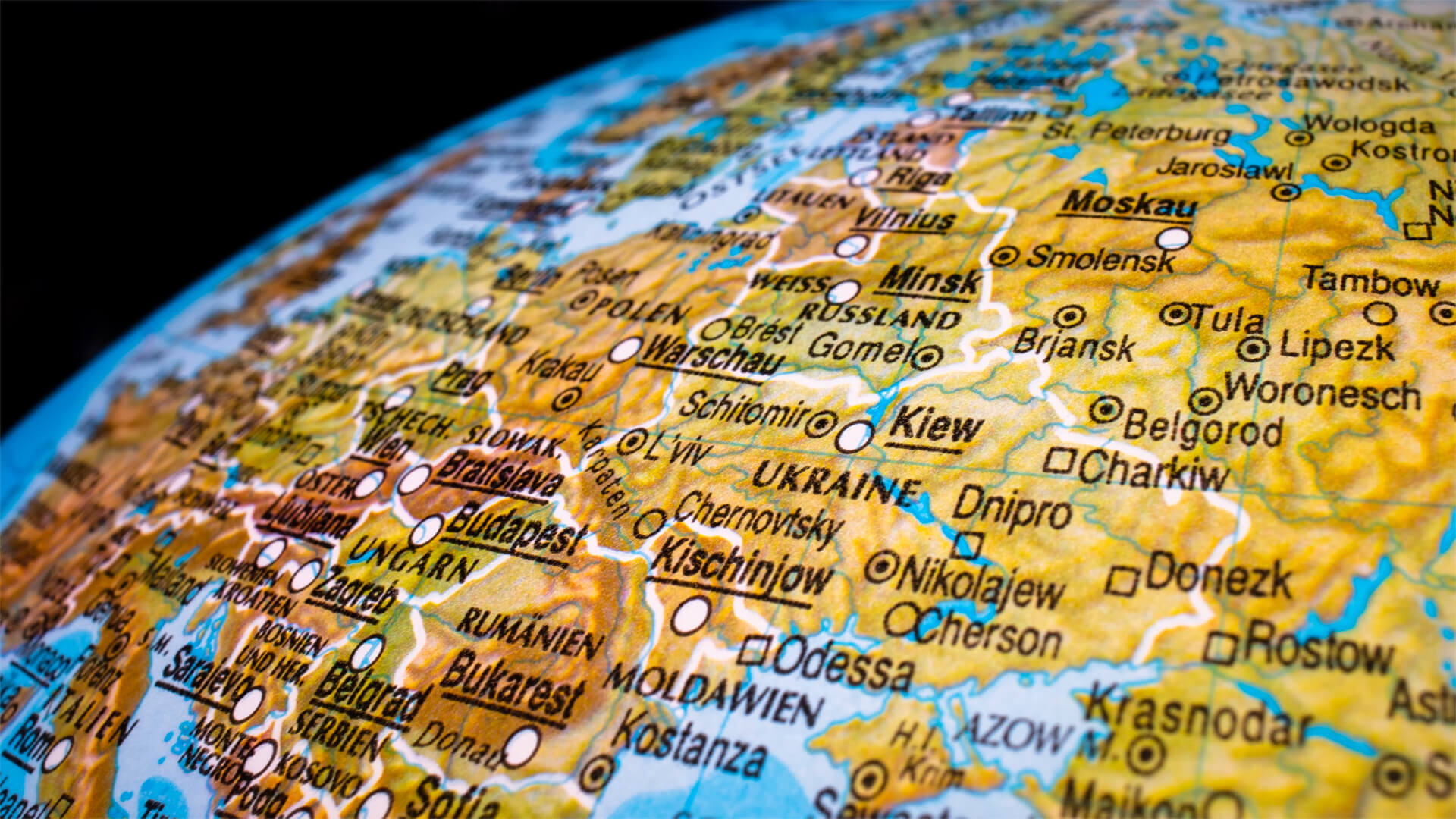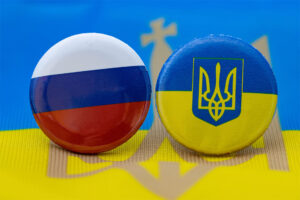It’s time we talk about a region that has long held the title of “worst demographics”…The Orthodox Christian countries.
The big dog of the region – Russia – has entered a point of no return for its demographic situation. Ukrainians are even worse off. Regardless of the outcome of this war – they’ll end up with a s*** stew of demographics.
Other countries like Bulgaria and Romania aren’t any better off. They’ve basically sent out all of their youth to other countries for economic opportunities…and even if they do return, they’re not adding to the population once they reach their 40s and 50s.
Serbia had the opportunity to flourish into the most rapidly growing economy in the region. Still, they’ve made every wrong policy decision in the book…so no dice for them either.
Each of these countries will likely come face-to-face with its inevitable demise within the next 20 years, and there’s not much they can do about it.
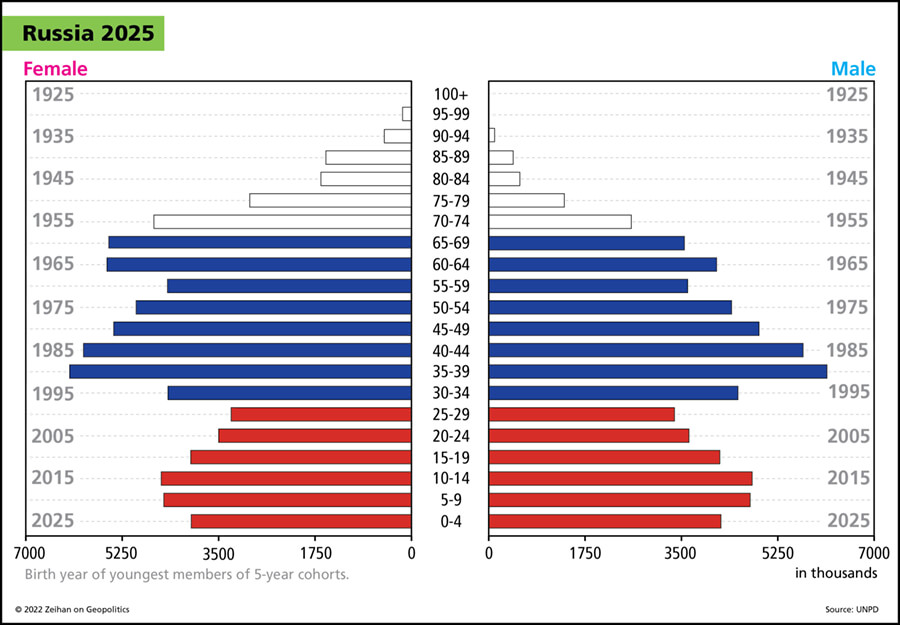
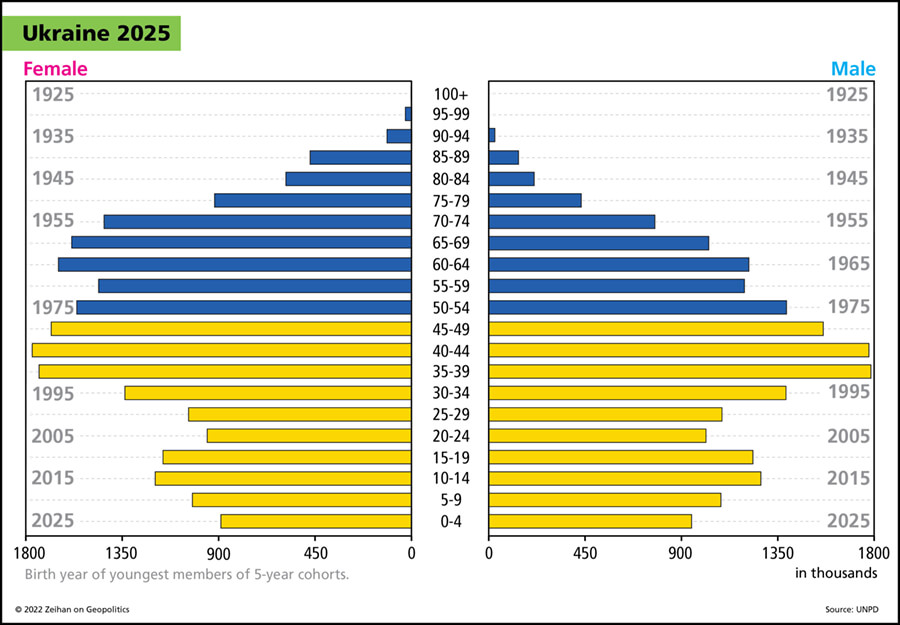
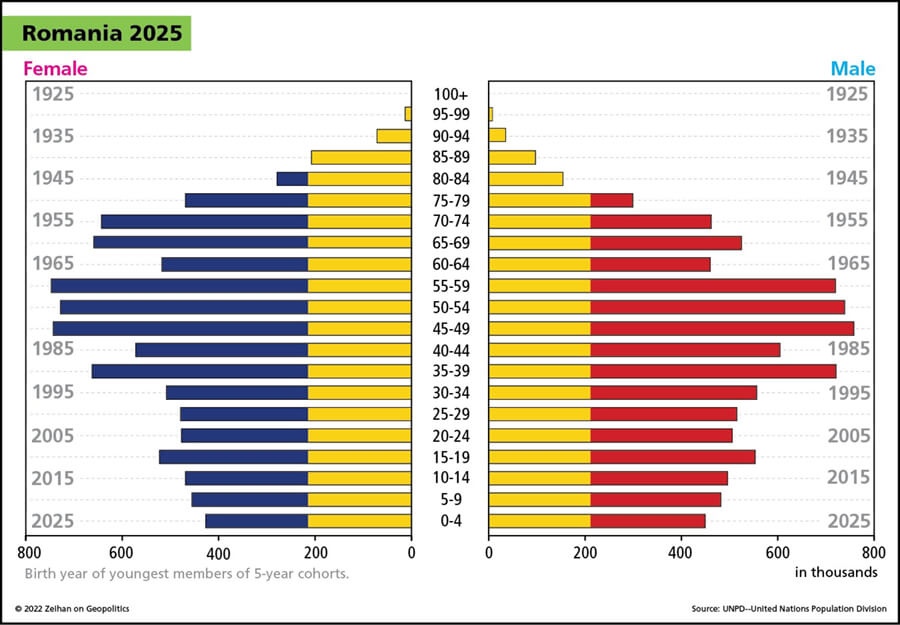
Prefer to read the transcript of the video? Click here
Here at Zeihan On Geopolitics we select a single charity to sponsor. We have two criteria:
First, we look across the world and use our skill sets to identify where the needs are most acute. Second, we look for an institution with preexisting networks for both materials gathering and aid distribution. That way we know every cent of our donation is not simply going directly to where help is needed most, but our donations serve as a force multiplier for a system already in existence. Then we give what we can.
Today, our chosen charity is a group called Medshare, which provides emergency medical services to communities in need, with a very heavy emphasis on locations facing acute crises. Medshare operates right in the thick of it. Until future notice, every cent we earn from every book we sell in every format through every retailer is going to Medshare’s Ukraine fund.
And then there’s you.
Our newsletters and videologues are not only free, they will always be free. We also will never share your contact information with anyone. All we ask is that if you find one of our releases in any way useful, that you make a donation to Medshare. Over one third of Ukraine’s pre-war population has either been forced from their homes, kidnapped and shipped to Russia, or is trying to survive in occupied lands. This is our way to help who we can. Please, join us.
CLICK HERE TO SUPPORT MEDSHARE’S UKRAINE FUND
CLICK HERE TO SUPPORT MEDSHARE’S EFFORTS GLOBALLY
TRANSCIPT
Hey Everyone, Peter Zeihan here coming to you from snowy Colorado, where, as promised, we’re going to be talking about the next chunk of our demographic series, specifically talking about the Orthodox Christian world, which is a huge swath of territory stretching from Russia to Belarus and Ukraine and Moldova, Bulgaria, Romania and Serbia. Now, these countries have three characteristics in common that have really shaped their demographic destinies, and none of them have been great.
The first is broad scale economic dislocation. These were the parts of the former communist world that didn’t do well, even at the height of communism. They weren’t very advanced. And especially when the post-Cold War system erupted, they didn’t have anything really to contribute aside from raw commodities. Their industry was outdated. They weren’t producing steel like the Czech Republic or I.T., stuff like the Latvians. They were only doing grains and raw materials and energy. And you can get growth from that. You can get wealth from that, you can get infrastructure and development from that. But unless it is really, really well-managed, the population just doesn’t see a whole lot of it. So these countries were in and out of horrible recessions for really 30 years.
It’s less bad in places like Romania and Bulgaria because they did ultimately get into the EU in the late 2000s, but they were the last ones in line. Serbia took a kind of a double hit because they don’t have a lot of raw materials that they can export to the world. And in the aftermath of the NATO bombings in the Yugoslav wars in the early 1990s, Serbia never moved on. So even with the Russians under Putin going from win to win, in terms of global policy and generating a lot of income from oil in Serbia, there was a whole lot of nothing. And politics basically became locked down in the aftermath of the Yugoslav wars, and the country really was never able to advance to whatever is next. And that holds true even today.
Okay. What’s second because of the economic dislocation, because so many people didn’t see a lot of opportunity. You had huge immigration from all of these states, mostly to Western Europe, some to the United States and Canada in the cases of Romania and Bulgaria once they got into the EU. If anything, the outmigration accelerated because there were then fewer restrictions.
The Russians easily lost 10 million people in the 1990 and early 2000s to the wider world. And in the case of Moldova, perhaps as much as one quarter of the female population under age 50 left never to return, some of them going, a lot of them going into the sex trade because there really wasn’t a lot of an option because education in Moldova during the Soviet periods was even very low.
Serbia is probably the country that has suffered the most from this outmigration because again, the government just has never moved on and there’s never been a plan economically for what’s next.
The third one kind of flies under the radar and is probably going to piss a few people off. But here we are. Birth control in this region. The primary method is abortion.
So on average, more than seven out of ten pregnancies across this space are terminated. And if you have one abortion, I know I’m a dude. I really have no right to say this, but, you know, I’m going to go out on a limb and guess that it’s not critical to your health. But if you have ten, you’re probably endangering your future fertility.
So between a very low death rate, a very high abortion rate and very high infertility rates because of the weird intersection of health care and birth control and economic collapse, it’s arguable that a lot of these countries, probably Russia, right at the very top of that list, simply could not repopulate, even if the economic conditions were to turn around. So this is the part of the world that is duking it out with Northeast Asia for the lowest birth rates and the fastest national mortality, if that’s the right term in the world. So that’s kind of the overview.
Those are the three big issues that shape the region as a whole. But we do need to give additional attention to the Russians and the Ukrainians.
Now, the Russians have had a series of stacked geopolitical disasters World War One, World War Two, Stalin’s famines, Brezhnev’s mismanagement, Khrushchev’s mismanagement, and then the post-Cold War collapse. All these kind of stacked on each other. And so that the current generation that is now in their twenties is the smallest one they’ve ever had.
The Russians say they’ve got a metric ton of teenagers and that the demographic turn has been made and they’re going to be fine if they are telling the truth about that. That would be the only of their data that they’re telling the truth. More likely that we actually have fewer teenagers than 20 somethings. And you’ll see that in the demographic graphic that we’ve patched into the show.
More likely, their data is more similar to the situation in Ukraine. One more thing about the Russian demographics. They’re not equal. Just as in the United States, where places like Utah, Texas have higher birth rates in places like New York or Connecticut because they’re less urbanized or have different cultural norms. The same is true in Russia. Russia is not just Russian. The Russian state was originally founded in the area in Moscow, and they discovered that they really had no borders that were secure. So the way they decided to deal with that was to expand, conquer all their neighbors, consolidate and expand again, conquer all of those neighbors and so on and so on and so on until they get to the Russia that we more or less know today and during the Soviet period.
That means that there are dozens of conquered peoples living within the Russian system. Some of them have demographic stats that are just as bad as the Russians, but not all of them. A lot of the Turkic minorities, most notably the Chechens, the Dagestanis, the Basqueirs, and the Tatars actually have very robust demographic structures and are doing very well from a health and a growth point of view.
Well, the last decent number that we’ve got from the Russians was done by the 1989 Soviet Census. And at that point, the best guess – Soviet numbers, after all, was that 20% of the Russian population within the Russian Federation was non Russian. So 80% Russian, 20% non-Russian. Well folks, that was over 30 years ago. It’s probably closer to 25 to 30% today.
That’s non Russian. And if you fast forward another 20 years, you’re talking about probably 30 to 35%. Now these are all guesstimates upon guesstimates because this is Russia and getting good data is next to impossible even before there was a war. But we do know for sure that even if you include all of the minorities, the Russians, only have 8 million men aged 20 to 36 months from now.
At least a million of those are going to be committed to the war in Ukraine. We already have over 100,000 dead. We already have about a million who have fled the country. So one way or another, the Ukraine war is the last conventional war that the Russians are ever going to be able to fight because they simply won’t have enough people.
Now, the Ukrainians have no reason to lie about their demographic data, aside from the fact that it’s absolutely atrocious. And if you look at it and you look at just the collapse from the fifties to the forties to the thirties to the twenties, to the teens to kids, you’ll notice that this isn’t just a demographically spent country. This is a demographically dissolving country.
So unfortunately, even if the Ukrainians achieve runaway success in this war this year, it’s already too late. Even before the Russians started kidnaping children in the thousand, perhaps hundreds of thousands from Ukraine, this was a country that simply didn’t have enough people under age 40 to even theoretically repopulate themselves. So within 20 or 30 years, we are looking at the Ukrainian ethnicity vanishing from this world and probably the Russian ethnicity, no more than 20 or 30 years behind that.
Like I said, they are duking it out with Northeast Asia to see who vanishes faster, which means we have to turn to Northeast Asia next, because that is going to be the part of the world where from an economic point of view, these demographic turnings have the greatest impact. Okay, take care. Until next time.


